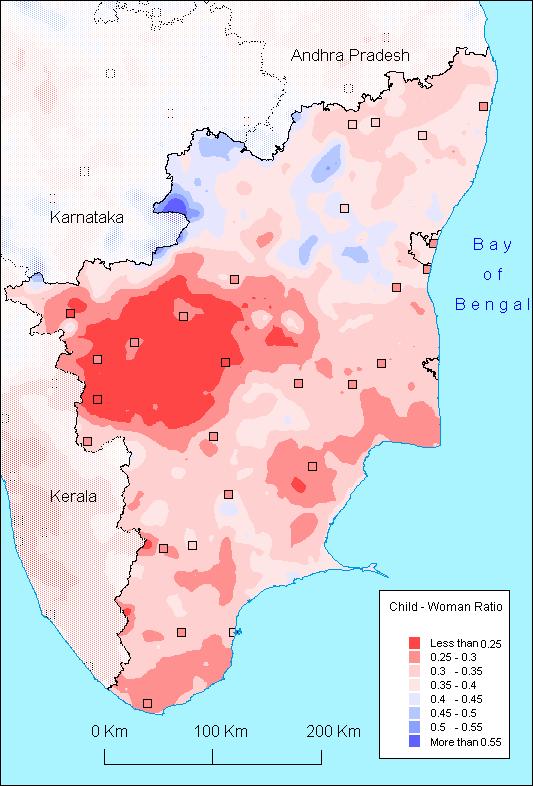|
Tamil Nadu's success in reducing its birth rates has been documented in the early 1990s, a rather late recognition in view of the pioneer character of fertility decline in Kongu Nadu (Coimbatore region) where birth rates started probably to fall more than two decades earlier. In the absence of rapid economic development as in the Punjab or impressive social improvement as in neighbouring Kerala, observers have often attributed the decline to the success of the regional implementation of family planning policies.
Our map may tell a different story: some regions in Western Tamil Nadu have indeed experienced a much earlier fertility decline than elsewhere, but this may have been triggered more by the innovative demographic behaviour of some local groups than by the regional government policies. In this part of the State, rural fertility is among the lowest recorded in the entire country and it is likely that the birth rate started to decrease as early as in South Kerala. For lack of disaggregated regional data, this decline failed to be noticed and remains today largely unknown.
The regional fertility map shows a great deal of heterogeneity across subregions that may not be explained by Tamil Nadu's demographic policy: while fertility decline is on the verge of levelling off at a level of two children per woman in several districts, high values are still recorded in other areas of North Tamil Nadu. Several tribal areas along the Karnataka border or in isolated hilly areas such as the Javadi Hills are also characterized by higher than average fertility levels. Fertility is rather low in Chennai where its decline probably started as early as in Kerala. Interestingly, the impact of Chennai's low fertility is hardly felt in the neighbouring areas except in the industrial Palar valley lying to its West.
C.Z.G.
|

